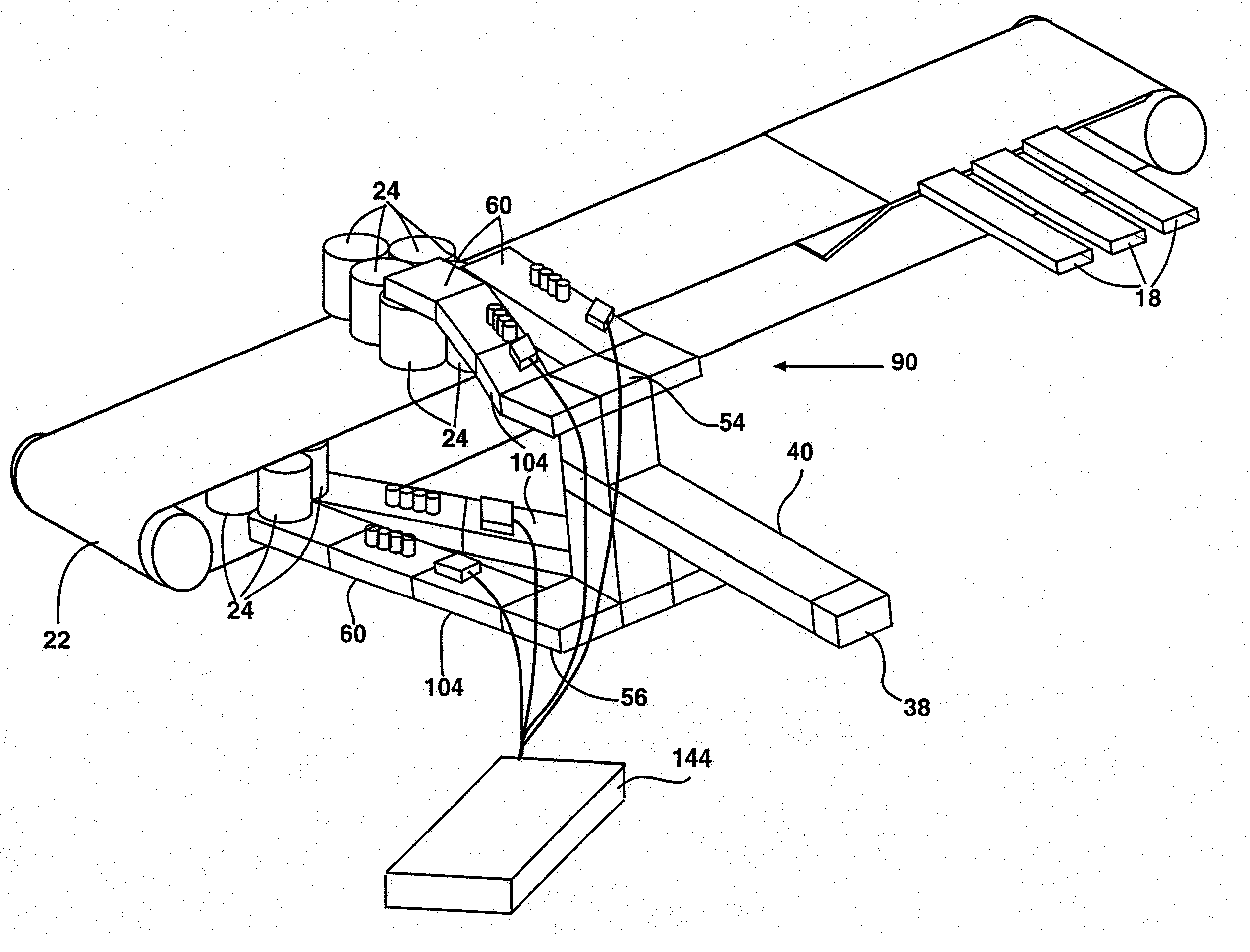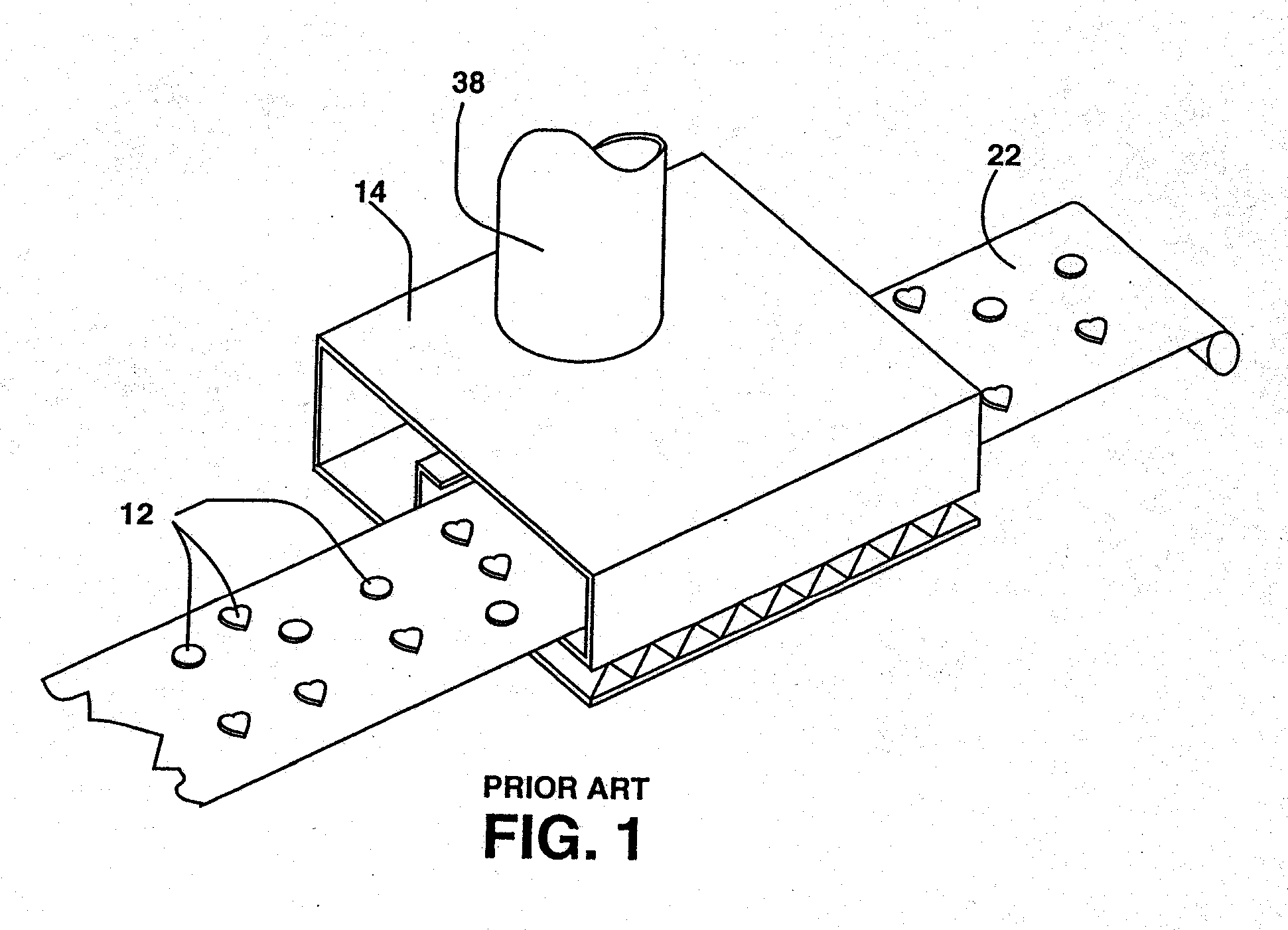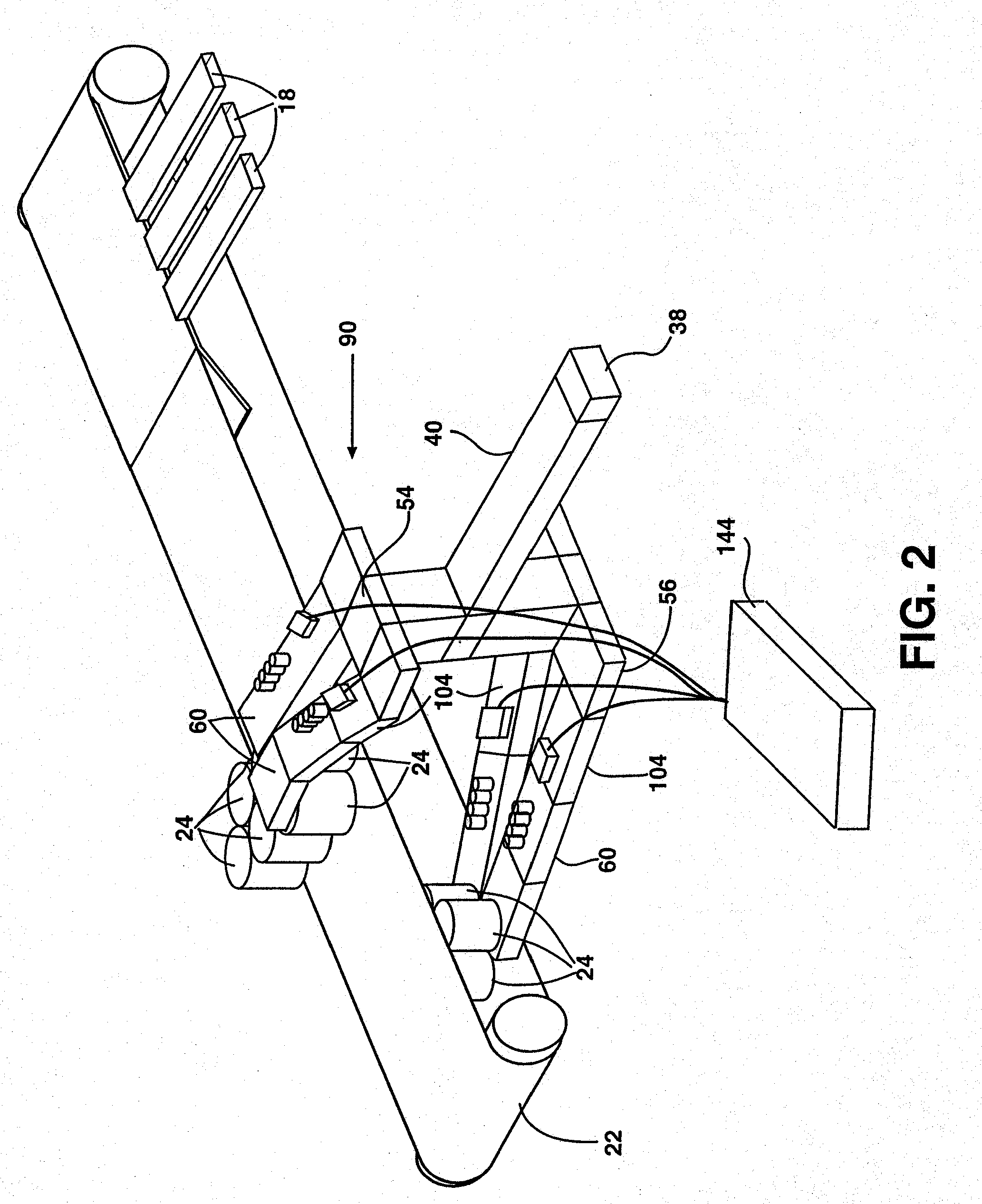Apparatus and Method for Microwave Heating Using Metallic Conveyor Belt
a conveyor belt and conveyor belt technology, applied in the field of microwave heating devices, can solve the problems of belt absorbing microwave power, becoming extremely hot, burning further, more burning, etc., and achieving the effects of reducing or even eliminating undesirable effects, reducing or eliminating the burning together of some items, and being highly resistant to high temperature effects
- Summary
- Abstract
- Description
- Claims
- Application Information
AI Technical Summary
Benefits of technology
Problems solved by technology
Method used
Image
Examples
Embodiment Construction
[0032] While the invention is susceptible of various modifications and alternative constructions, certain illustrated embodiments thereof have been shown in the drawings and will be described below in detail. It should be understood, however, that there is no intention to limit the invention to the specific form disclosed, but, on the contrary, the invention is to cover all modifications, alternative constructions, and equivalents falling within the spirit and scope of the invention as defined in the claims.
[0033] Referring to FIGS. 1 through 12, the invention is shown to advantage. FIG. 1 shows a simplified view of a prior art system for cooking or heating product such as foods on a conveyor belt. The product 12 is shown as a mass of small pieces of product, such as apple slices or vegetable pieces. However, the product 12 could be of any type of product, in any piece size, and the conveyor belt could be any number of different widths.
[0034] The product enters the heating machine...
PUM
 Login to View More
Login to View More Abstract
Description
Claims
Application Information
 Login to View More
Login to View More - R&D
- Intellectual Property
- Life Sciences
- Materials
- Tech Scout
- Unparalleled Data Quality
- Higher Quality Content
- 60% Fewer Hallucinations
Browse by: Latest US Patents, China's latest patents, Technical Efficacy Thesaurus, Application Domain, Technology Topic, Popular Technical Reports.
© 2025 PatSnap. All rights reserved.Legal|Privacy policy|Modern Slavery Act Transparency Statement|Sitemap|About US| Contact US: help@patsnap.com



